What is a possessive noun? Nouns possessing a thing or object (real or imagined) are referred to as possessive nouns.
Making a noun possessive often comes with confusion for many writers, as they are unaware of where the apostrophe should be placed.
Are the rules the same for independent possessive pronouns as they are for plural terms?
How can you be sure a proper noun is in its possessive form?
Here, you will learn all about what makes a term possessive and how to write grammatically correct sentences in the possessive format.
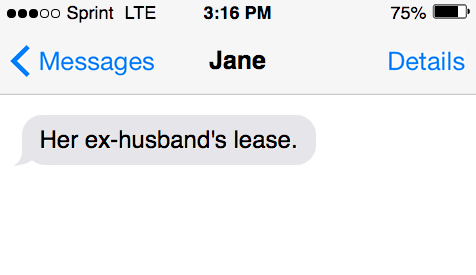
What is possessive form?
Possessive form shows ownership or separate possession by adding “‘s” or simple “‘” to a noun.
The possessive form of writing is often used, but learning all the English grammar rules associated with this style can seem almost impossible.
Fret not, as once you understand how to use possessive nouns, understanding what makes them grammatically correct is rather easy.
The important thing to remember here is that a possessive noun (people, places, or inanimate objects) shows that one or multiple nouns owns something.
What are possessive nouns?
A possessive noun is a noun that is used to show possession, ownership of something, or a direct connection.
Typically, these are recognized by the apostrophe and the letter “S” at the end of the word somewhere.
Remember, nouns are words used to identify any class of people, things, places, (common nouns) or to name a particular person, thing, or place (proper nouns).
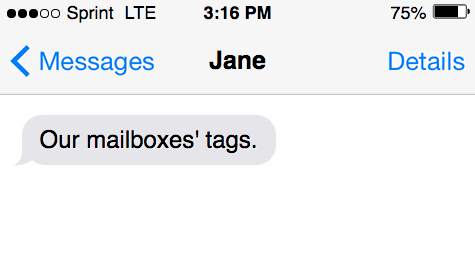
Some examples of possessive nouns are as follows:
- “The tree’s leaves.”
- “Daniel’s baseball mitt”
- “The bottle’s cap.”
When should you use a possessive noun?
Writers use a possessive noun to show possession or ownership of something.
Additionally, these terms can be used to indicate a direct connection between the subject and an object.
Typically, possessive nouns are placed directly in front of the object of ownership in a sentence.
When possessive nouns are not used, one can show ownership with the preposition “of.”
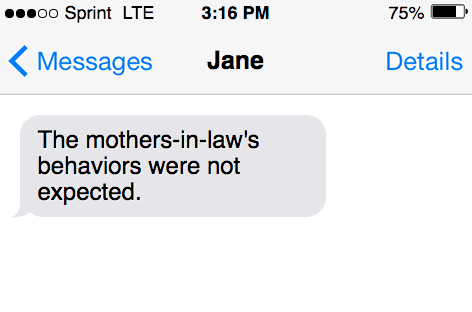
For instance:
“…the headphones of the student.”
Notice that this statement can be re-written as “…the student’s headphones.”
In both cases, the possessive form is present.
The audience understands that the “student” is the owner of “the headphones” mentioned in the statement.
Essentially, one should use possessive nouns to describe any situation where a noun owns or possesses something.
Types of possessive nouns
There are four types of possessive nouns to be aware of, which causes confusion for many writers.
Still, there are simple rules to follow that make understanding these words much more manageable.
Plural possessive noun
Plural possessive nouns are trickier to understand because the most singular nouns will usually add an “S” at the end of it to make it plural (unless it is irregular).
With plural possessive nouns, the typical way to write them is to use an apostrophe at the end of the word.
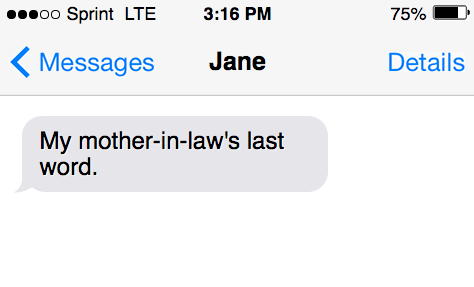
However, for general and proper nouns, like “class” or “Russ,” the ‘s format is still used to make it a plural possessive noun.
Lastly, keep in mind that the rules for irregular plural nouns are different (see below).
Examples
- “teams’ game”
- “pencils’ case”
- “students’ test”
- “bottles’ packaging”
Singular possessive
Singular possessive nouns are the most basic and most used form of possessive nouns.
That said, a singular possessive noun is a single noun that becomes possessive by adding an apostrophe and the letter “S” to the end of the word.
Singular possessive nouns also include an “S” at the end of the term even if the noun already ends in an “S.”
As long as the proper noun is singular, singular possessive nouns always include an apostrophe and an “S.”
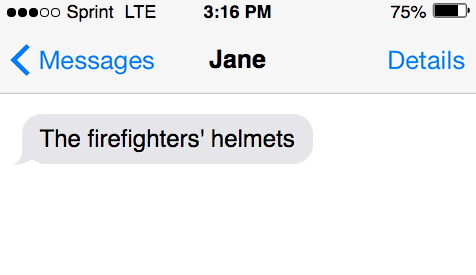
This also applies to both mass and collective nouns.
Mass are nouns that don’t have a plural form and are uncountable, like “money” or “clothing.”
Collective are nouns that are singular nouns that represent various things, like “family” or “squad.”
Examples
- “Lacy’s car door”
- “team’s forward”
- “boss’s chair”
- “Russ’s barber shop”
Possessive pronouns
Pronouns are words that are used as substitutes for nouns or noun phrases that are either named or already understood in context.
There are two types of possessive pronouns: weak possessive pronouns and strong possessive pronouns.
Weak possessives serve as determiners in front of nouns, and are not plural.
These include terms like:
- My
- Your
- His
- Her
- Its
- Our
- Their
In comparison, strong plural possessive pronouns stand on their own and are a type of independent genitive.
Some examples of words that can act as strong possessive pronouns include:
- Mine
- Yours
- His
- Hers
- Theirs
- Ours
Essentially, pronouns are used to avoid repetition.
Typically, possessive pronouns do not come before the object of the possessive.
Instead, what the possessive pronoun refers to was already mentioned in the statement.
Therefore, one uses possessive pronouns to avoid repeating the initial word.
Examples
- “I don’t have my book with me. Can I use yours?”
- “I wish I had a fashion sense like hers.”
- “David’s house is closer to the club than mine is.”
- “I wanted to develop a website that ran similar to his.”
- “I couldn’t think of a second noun to use, so I used hers.”
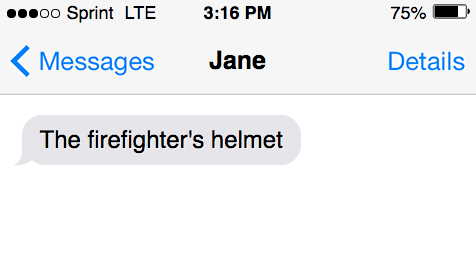
Irregular possessive
As previously mentioned, most plural nouns end with an “S,” but that rule doesn’t apply to all plurals.
That said, irregular plural nouns include terms like “children” or “teeth.”
Further, these terms each have unique plural forms.
When irregular possessive nouns ends with an “S,” one only needs to add an apostrophe.
When irregular possessive nouns do not end in “S,” one adds both an apostrophe and an “S.”
Examples
- “wolves’ den (singular: wolf’s den)
- “women’s brunch” (singular: woman’s brunch)
- “children’s toys” (singular: child’s toys)
- “knives’ shelf” (singular: knife’s shelf)

| Singular Noun | Plural Noun |
| My child’s dog | My children’s dog |
| The man’s work | The men’s work |
| The mouses’ cage | The mice’s cage |
| A person’s clothes | People’s clothes |
Where to add an apostrophe rules
In the case of singular possessive nouns, one adds an apostrophe at the end of the singular noun, followed by an “S.”
No matter what letter the singular noun ends in, the format stays the same.
So, the format for a singular possessive noun looks like this:
[single noun] + [‘s]
For a plural possessive noun, one includes an apostrophe at the very end of the term.
If the plural form of the word is irregular, the format is different from that of plural possessive nouns.
Still, this is how a plural possessive noun should look:
[plural noun] + [‘]
In the case of possessive pronouns, you do not need to add an apostrophe to the term in question.
Recall that possessive pronouns include terms like “mine,” “yours,” “his/hers/theirs,” and “ours.”
As you can see in each possessive pronoun, you simply leave the term as is.
This rule makes understanding how to use possessive pronouns a little easier.
When writing possessive nouns that are irregular, the rule differs depending on if the plural ends in an “S” or not.
When an irregular possessive noun ends in an “S,” the format is:
[plural word] + [‘]
Possessive apostrophes are formatted differently for irregular plurals that do not end in an “S.”
[plural term] + [‘s]
Plural nouns vs. plural possessive nouns
A plural noun is when there is more than one person, place, or thing.
Most plural nouns add an “-s” or “-es” to the end of the term to become plural.
Recall that plural possessive nouns indicate that more than one noun has ownership of a thing.
Since a plural noun almost always ends in an “S,” only an apostrophe is required at the end of the term.
Take the following comparison to see the difference between plural forms of singular words:
“The dog’s bone is in the kitchen.”
In this sentence, the reader knows there is one dog, and that dog owns the bone that is currently in the kitchen.
Now, look at this second sentence:
“The dogs are playing in the park.”
In this second example, the reader understands that there is more than one dog at the park.
Lastly, see these two sentences:
“Kyle’s dogs ran away. The dogs’ leashes were nowhere to be found.”
These statements contain two possessives.
The first is “Kyle’s” and the second is “dogs’.”
In the first sentence, the reader can see that not one dog belongs to Kyle, but multiple (because the first noun is plural).
In the second, the reader understands that the leashes belong to the dogs.
The correct form of a plural or singular possessive noun is often simply differentiated by an apostrophe.
Compound possessives
If a possessive noun is a compound word, the rules are similar to other possessives.
First, here are a few examples of compound nouns:
- Railroad
- Mailbox
- Grandmother
- Firefighter
When the compound word is singular, simply include an apostrophe to make it possessive and show ownership.
- “The firefighter’s helmet.”
- “My grandmother’s birthday cake.”
When the compound plural noun ends in an “S,” the possessive looks like this:
- “The firefighters’ helmets.”
- “Our mailboxes’ tags.”
Hyphenated possessives
A hyphenated word is a type of compound term that typically includes two or more nouns connected by a hyphen.
Some more examples of compound terms with hyphens include:
- Mother-in-law
- Short-term
- Merry-go-round
- Ex-husband
- X-ray
When a hyphenated noun possesses other nouns, one writes the possessive form like this:
- “My mother-in-law’s last word.”
- “Her ex-husband’s lease.”
When the possessive singular nouns become plural and end in an “S,” they are written as such:
“The X-rays’ images were clear enough to read.”
However, if the plural does not have an “S” at the end, one adds both an apostrophe and an “S” to the final term, which looks like this:
“The mothers-in-law’s behaviors were not expected.”
Possessive adjectives
A possessive adjective is an adjective (describing word) that modifies a noun by showing who has possession of it.
That said, the most frequently used possessive adjectives include:
- My
- Your
- His
- Her
- Its
- Our
- Their
- Whose
Take the following sentence for instance:
“Michael placed his shirt on the table.”
In this statement, the adjective “his” indicates to the reader that Michael owns the shirt.
These adjectives can also be used to show ownership of a figurative object, such as:
“Piper described her daydream to me at lunch.”
In the previous case, “her” is the possessive adjective.
Lastly, these types of adjectives can refer to relationships people have with others.
For instance:
- “Gavin and Ben are driving with their parents.”
- “Their” depicts that the parents are related to Gavin and Ben, not that Gavin and Ben own their parents.
Possessive Nouns and Plural Posessive Nouns FAQs
Can an apostrophe and an “s” together represent a contraction?
Yes. Two words put together to make a single word can also do this. For example: ice-cream. Or ice-cream. These can be compound nouns, as well. For example, “coffee table,” “forest fire.”
What is a plural possessive noun that ends in an apostrophe “s”?
An example would be “children’s clothes.” Without an apostrophe “s” and being a possessive noun would be: kids toys, smiths house (referring to the smith family). Each relate to different things but indicate possession.
What are the seven possessive nouns?
Mine, ours, yours, his, hers, its, and theirs.
What are the three rules of possessive nouns?
Rule 1: To form the possessive of a singular or to add an apostrophe and an s.
Rule 2: For a plural noun, add only an apostrophe (‘)
Rule 3: For a possessive noun that does not end in an “s” letter, add an apostrophe and “s” letter. For examples, “mice’s.”
More on nouns
More resources about nouns:
- Possessive nouns
- Irregular plural nouns
- Proper nouns
- Concrete nouns
- Collective nouns
- Possessive and plural nouns
Sources
- What is a possessive adjective? – Thesaurus.com
- Possessive Pronoun – Definition and Examples – ThoughtCo.
- What Are Posessive Nouns? (with Examples) – Grammar Monster
- What Is a Mass Noun? – Grammarly
- Pronoun definition – Merriam-Webster
- Possessive Nouns: How to Use Them, With Examples – Grammarly
- Hyphenated Words: Usage, Rules, and Examples – Pro Writing Aid
- What Are Proper Nouns And How Do You Use Them?
- Compound Nouns | Grammar – EnglishClub
- 6. Compounding Rules A compound word is a union of two or more nouns
Inside this article
Fact checked:
Content is rigorously reviewed by a team of qualified and experienced fact checkers. Fact checkers review articles for factual accuracy, relevance, and timeliness. Learn more.
Core lessons
Glossary
- Abstract Noun
- Accusative Case
- Anecdote
- Antonym
- Active Sentence
- Adverb
- Adjective
- Allegory
- Alliteration
- Adjective Clause
- Adjective Phrase
- Ampersand
- Anastrophe
- Adverbial Clause
- Appositive Phrase
- Clause
- Compound Adjective
- Complex Sentence
- Compound Words
- Compound Predicate
- Common Noun
- Comparative Adjective
- Comparative and Superlative
- Compound Noun
- Compound Subject
- Compound Sentence
- Copular Verb
- Collective Noun
- Colloquialism
- Conciseness
- Consonance
- Conditional
- Concrete Noun
- Conjunction
- Conjugation
- Conditional Sentence
- Comma Splice
- Correlative Conjunction
- Coordinating Conjunction
- Coordinate Adjective
- Cumulative Adjective
- Dative Case
- Determiner
- Declarative Sentence
- Declarative Statement
- Direct Object Pronoun
- Direct Object
- Diction
- Diphthong
- Dangling Modifier
- Demonstrative Pronoun
- Demonstrative Adjective
- Direct Characterization
- Definite Article
- Doublespeak
- False Dilemma Fallacy
- Future Perfect Progressive
- Future Simple
- Future Perfect Continuous
- Future Perfect
- First Conditional
- Irregular Adjective
- Irregular Verb
- Imperative Sentence
- Indefinite Article
- Intransitive Verb
- Introductory Phrase
- Indefinite Pronoun
- Indirect Characterization
- Interrogative Sentence
- Intensive Pronoun
- Inanimate Object
- Indefinite Tense
- Infinitive Phrase
- Interjection
- Intensifier
- Infinitive
- Indicative Mood
- Participle
- Parallelism
- Prepositional Phrase
- Past Simple Tense
- Past Continuous Tense
- Past Perfect Tense
- Past Progressive Tense
- Present Simple Tense
- Present Perfect Tense
- Personal Pronoun
- Personification
- Persuasive Writing
- Parallel Structure
- Phrasal Verb
- Predicate Adjective
- Predicate Nominative
- Phonetic Language
- Plural Noun
- Punctuation
- Punctuation Marks
- Preposition
- Preposition of Place
- Parts of Speech
- Possessive Adjective
- Possessive Determiner
- Possessive Case
- Possessive Noun
- Proper Adjective
- Proper Noun
- Present Participle
- Prefix
- Predicate



